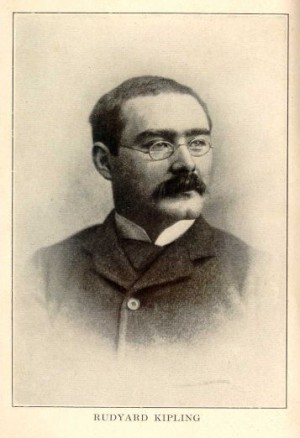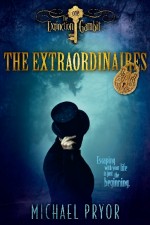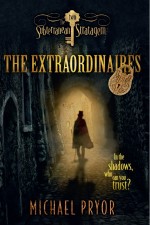Using Real, Historical People in Fiction
Writers have many challenges. Getting a pencil to a perfect sharp point. Coming up with alternatives to ‘Once upon a time’ to start a story. Finding time to count our enormous sacks of money. Things like that. With The Extraordinaires, my most recently released series I encountered a challenge that I hadn’t confronted before: the intricacies of using a real life character in a work of fiction.
One of the joys of writing fiction is being allowed to make up stuff. It’s fun, and when you’re a Fantasy writer, you get to make up huge bucketloads of stuff, which is extra fun. So when, for a change, I decided to set a book in the real world and include some real, famous people as characters, I had to do something different. I had to stick to the facts.
 The main character of my story – Kingsley Ward – is totally made up, but in the course of the novel he runs into the real life author Rudyard Kipling, who is fascinated by Kingsley because Kingsley was raised by wolves.
The main character of my story – Kingsley Ward – is totally made up, but in the course of the novel he runs into the real life author Rudyard Kipling, who is fascinated by Kingsley because Kingsley was raised by wolves.
The connection, of course, comes about because of one of Kipling’s most famous creations – Mowgli, the hero of Kipling’s hugely successful ‘The Jungle Book’, who was also raised by wolves.
Naturally, I’m playing around with this connection between imagination and real life in my story as well as in my planning for the story, so to speak., but that’s another post for another day – as is the whole matter of children being raised by wild animals, something that I uncovered some fascinating material for during my research.
Once Kipling was part of my story, I had to find out as much as I could about him. He was probably the most famous writer of his time, widely read and respected, and a celebrity both in literary circles and the wider community. I could find plenty about his work, and his influences, and his interests, and details of his life were well documented. I needed something more concrete however – and this was a real sticking point. I could find out intriguing stuff such as his being an early motoring enthusiast, but I needed to something more basic. I need to know what he looked like.
It’s obvious, really, that writers need to know what their characters look like, and when we make them up this is a straightforward task. For real people, however, I had to stick to the facts. I had plenty of photos of Kipling, which were helpful, but I had trouble with one important detail, one that was vital for constructing a scene where Kipling is talking to someone. I needed to know how tall he was.
I sifted through book after book and found nothing. It’s funny, but Kipling’s friends and family didn’t really mention his stature, and Kipling didn’t bother to give us his height in any of his autobiographical material. I suppose it was mostly taken for granted, or considered unimportant. I was able to pick up little details about his mannerisms (priceless) and his speech patterns (equally priceless) but his height was elusive.
 Finally, in a battered library copy of Kingsley Amis’s biography of Kipling, I found the following: ‘Physically, Rudyard Kipling was a small man. Five foot six inches is the official estimate.’ Eureka!
Finally, in a battered library copy of Kingsley Amis’s biography of Kipling, I found the following: ‘Physically, Rudyard Kipling was a small man. Five foot six inches is the official estimate.’ Eureka!
This just shows the power of research. Because as well as finding what I needed in order to present a faithful, authentic version of Rudyard Kipling, I stumbled across the name for my main character. Research. I love it because you can find what you need, but you also find the unexpected. Serendipity.

